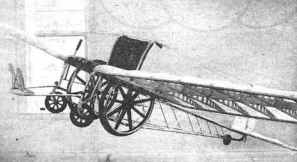
In the art world. there is a long tradition of the flaneur, the solitary observer who wanders the streets of the city, taking his inspiration where he finds it. Often it takes the form of castaway objects, debris from the trash heap or sometimes the second-hand store. Joseph Cornell, the found-object sculptor whose magical shadow boxes made for a new medium in their own right, was a world class flaneur who routinely patrolled the streets of Manhattan looking for exactly the right orphaned objects to complete some box sculpture so precisely orchestrated as to constitute a miniature cosmos in its own right.
Paul Villinski, a 46 year-old New Yorker whose Airlift expo is on view at the Ferrara gallery, is also a flaneur of sorts, a connoisseur of some of the most prosaic and poignant trash the streets have to offer. He is also a pilot of sailplanes and gliders, and his artwork often alludes to ascendance, as experience and as metaphor. Invited by Jonathan Ferrara to have a go at the streets of New Orleans, he descended into the depths of the Lower Ninth Ward, among other flood-savaged venues, to search for objects suitable for his work. After an initial burst of enthusiasm, he soon felt dumbstruck and then furious at the scale of the damage and the slow pace of progress. His show includes work created in New York and New Orleans.
Radio Flyer is a classic red wagon found on the streets of a flooded local neighborhood, a traditional icon of childhood abandoned to the ravaging waters. Here it is outfitted wlth a motor and propeller-as well as some gossamer if functional wings, and it looks capable of soaring - at least, in the imagination. A nearby set of drawings for the project recalls the flying machine designs concocted by Leonardo da Vinci and other renaissance inventors. Up against the wall is Hard Lesson, a wooden ladder ris· ing from a stack of sandbags. Resting atop it is a child's wooden chair, a dreamlike reminder of Katrina's surrealistic tumult of houses resting atop cars and so forth. Nearby an arrangement of found gloves on the wall delineates a water line in applied gold leaf.
Everywhere on the gallery walls are bev· ies of butterflies in repose, the shiniest and most colorful carefully crafted from old beer cans. The larger, duller ones were cobbled from scavenged. water-damaged records transformed by the artist's handiwork into winged creatures. Probably the most fanciful and fully realized piece is Air Chair, a wheelchair attached to an airframe fuselage and outfitted with wings. Suspended from the ceiling at a jaunty angle, its graceful metamorphosis inspires a sense of deliverance from the burden of earthly constraints. In that sense, it serves as an apt symbol for this clever and inventive show as. a whole. Villinski's Airlift expo lives up to its name.
Written by D. Eric Bookhardt